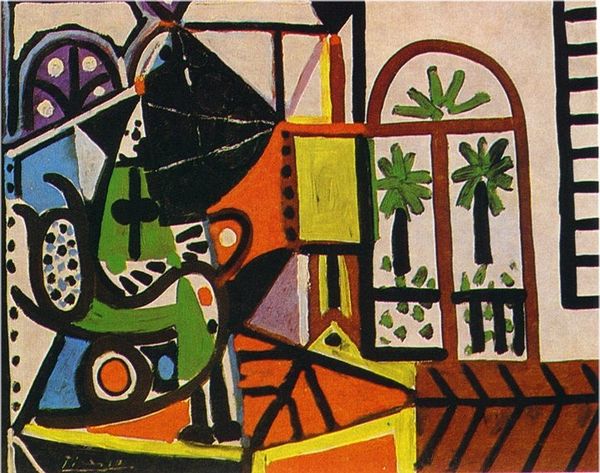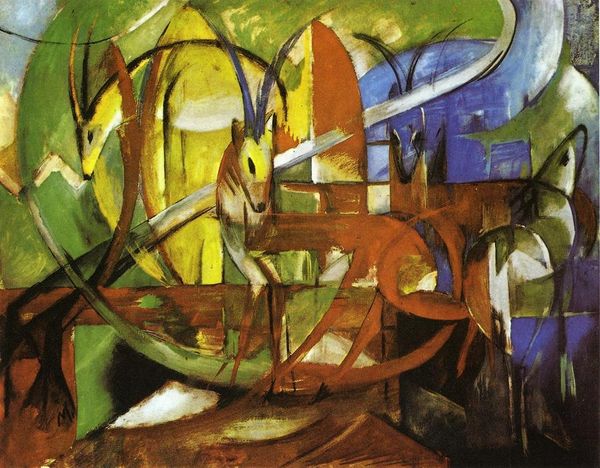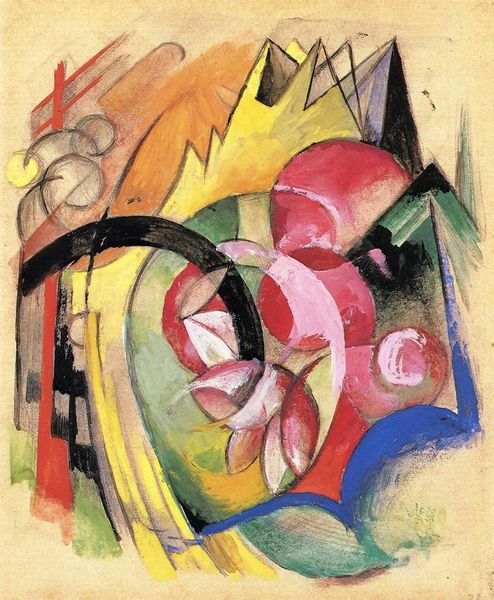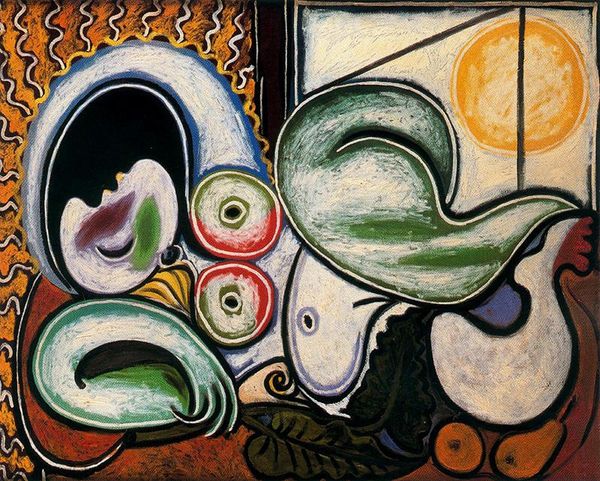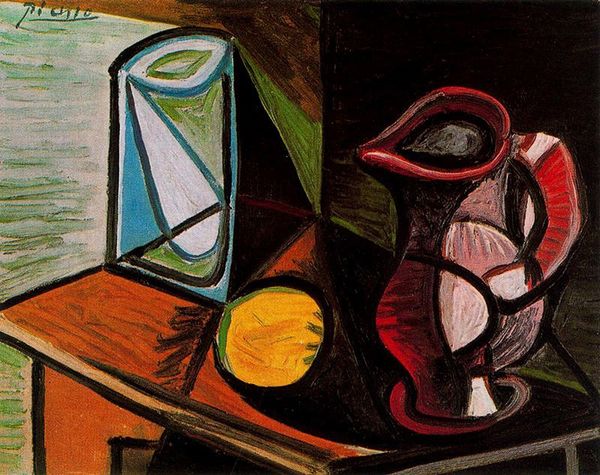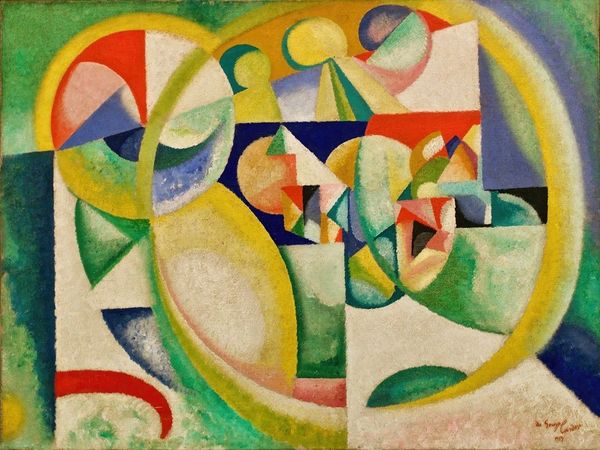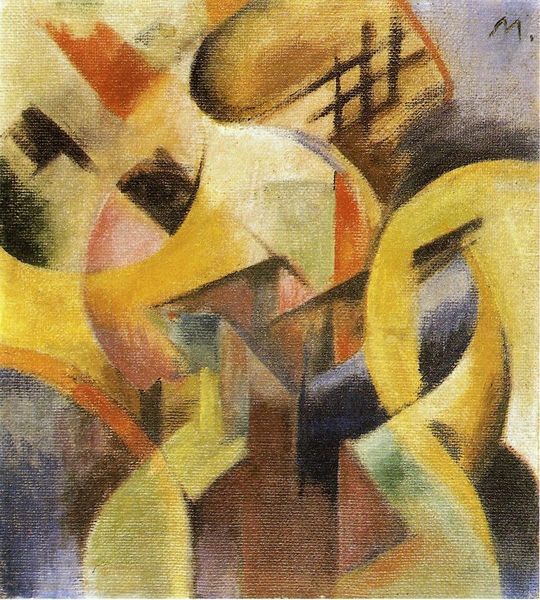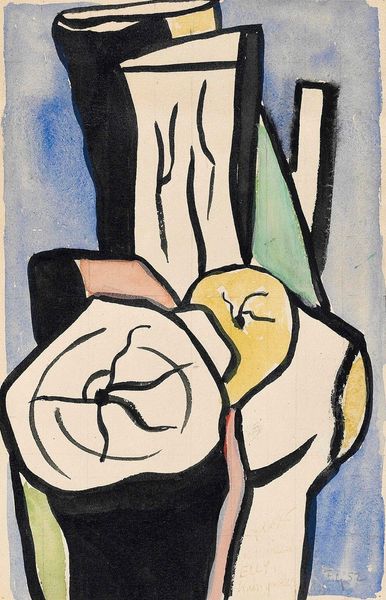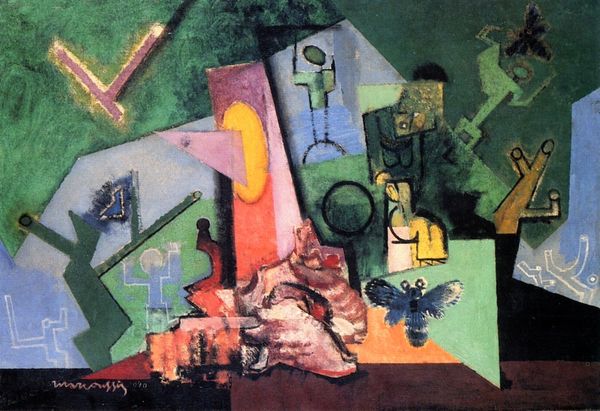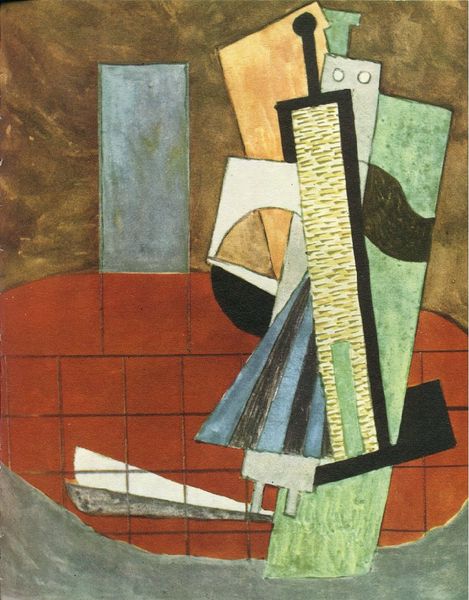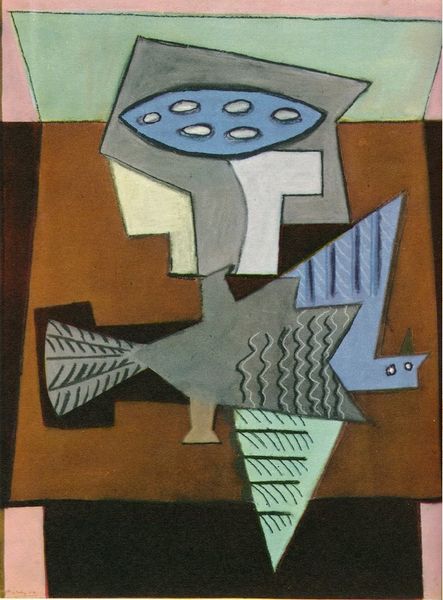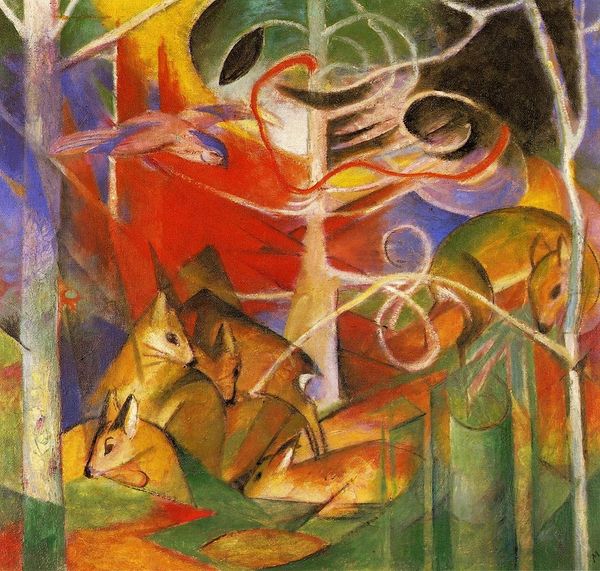
painting, oil-paint
#
cubism
#
abstract painting
#
painting
#
oil-paint
#
landscape
#
flower
#
form
#
geometric
#
plant
#
abstraction
#
line
#
modernism
Dimensions: 125 x 190 cm
Copyright: Pablo Picasso,Fair Use
Editor: So this is "Still Life" by Pablo Picasso, painted in 1931. It's an oil painting, and looking at the composition, it strikes me as an almost diagrammatic arrangement of everyday objects. What do you see in this piece? Curator: I see Picasso engaging with the very process of representation itself. The flattening of form, the breaking down of the subject into constituent parts - this speaks to a society grappling with industrial production and mass media. We're not just looking at a still life; we're seeing a dismantling of traditional artistic labor. Consider the oil paint – a relatively new industrial material at the time – applied to depict objects divorced from their natural contexts. How does this manipulation of materials impact our understanding of the objects themselves? Editor: That's interesting, I hadn’t considered the role of mass media. Do you think Picasso was making a conscious statement about that shift? Curator: Absolutely. Picasso was acutely aware of how the means of image production were changing. By abstracting form, he challenged the notion of art as a purely mimetic practice. The linear framework overlaying the still life functions almost as an assembly line, reducing the plant and flower objects to parts, calling into question the place of labor in art. Notice also how accessible and ubiquitous oil paint had become by 1931; what does this suggest about its purpose when it is combined with subject matter? Editor: I guess it sort of democratizes the ability to create, but also changes how we value what is created. So, this isn't just about *what* is painted, but *how* and *with what*. It’s also about how widespread material is made to appear as something 'original'. Curator: Precisely! And think about how that shift also altered consumption and the value we place on “originality.” It becomes a dance between the artwork, the materials, the production process, and societal values. Editor: Wow, I never would have looked at it that way. Thanks, I learned so much. Curator: It’s been my pleasure; it seems Picasso wanted to dismantle artistic convention while simultaneously making it anew for a changing world.
Comments
No comments
Be the first to comment and join the conversation on the ultimate creative platform.
